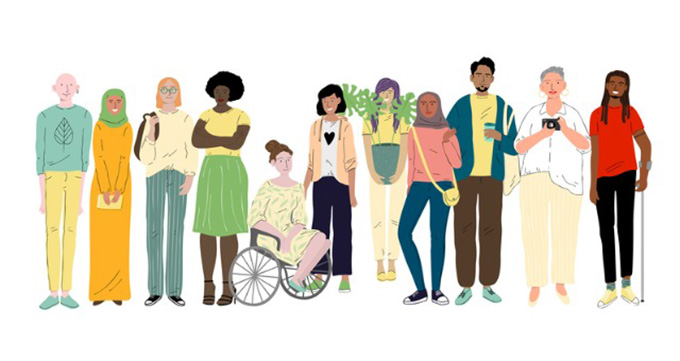
Culturally Relevant Education (ECR) is a pedagogy that recognizes the importance of including the cultural legacies of students in all aspects of learning.
It is a little or no known approach and constitutes an opportunity to significantly enhance the success of culturally diverse students.
Culture is essential for learning. It plays a role not only in the communication and reception of information, but also in shaping the thought process of groups and individuals. A pedagogy that recognizes the cultures present in the classroom offers full and equitable access to education for all students.
But why should we address cultural diversity in the classroom? As more and more students from different backgrounds populate classrooms and efforts to identify effective methods for teaching culturally and linguistically diverse school populations increase, the need for pedagogical approaches that are sensitive to that diversity intensifies.
Culturally plural classrooms require teachers to teach students of different cultures, languages, abilities, and many other characteristics. There is no lack of arguments to justify the gradual need for a pedagogical model like this one, in light of certain social and cultural trends of modernity, the growing economic globalization, the development of the digital society, the seduction by the impulse of individual competencies and the exclusion of groups and groups that are increasingly violated in their rights.
A culturally sensitive pedagogy
To meet these challenges, teachers must employ not only a theoretically sound but also culturally sensitive pedagogy, creating a classroom culture where all students, regardless of their cultural and linguistic background, are welcomed and supported and provided with best opportunity to learn.
For many students the behaviors required in school (for example, sitting in the seat and only speaking when requested) and the types of speech ( direct or indirect ) contrast with the home culture and language practices.
To increase the quality of the schooling of students, and specifically their academic success, it is imperative that teachers help students overcome this discontinuity between home and school as a means to promote their social and educational inclusion, under conditions equality and citizenship.
Origins of ECR in the US
The ERC appeared in the United States in the 90s. It is a pedagogical strategy that contributes to the literature around intercultural education, receiving multiple names, such as “culturally appropriate pedagogy”, “cultural congruence in instruction”, “culturally education responsible / sensitive ”or“ culturally sustainable ”.
It aims to respond to the improvement in the academic performance of culturally diverse students and for this it questions traditional teaching .
It proposes increasing the relationship between the culture of the school, what is learned in it, and the culture of the home, that is, the knowledge that is brought from home. The lack of connection between the two could explain school failure in certain cultural groups due to the undervaluation, even rejection or ignorance, that the school culture has about the multiple ways of life and culture of the students.
To do this, the ERC gives space and time in the curriculum, including the experiences and knowledge of the students, and does so taking into account their culture and identity.
The assumption is that, if the organization of the school activity is closer to the experience and ways of life of the students, their cultural background is recognized, the connection between school, family and social environment is facilitated, optimizing the commitment and sense of the school educational context and what is done in it.
CKD implies in the teacher a change of outlook that leads to questioning their attitudes: Do you consider that culturally diverse students come with a cultural deficit that the school must cover, or do you value the students’ cultural / linguistic background as a contribution to the resume? In addition, he must reflect on his way of teaching, how he plans the teaching activity and how he evaluates.
The “mothers” of this pedagogy
Two researchers stand out in this field of work: Gloria Ladson-Billings and Geneve Gay . For the first, ERC is that education “that empowers students intellectually, socially, emotionally and politically through the use of their cultural references in teaching.” For this reason, it emphasized how and why the teachers’ beliefs, their ethical sense and their ideas about teaching are substantive factors in the reception they give to culturally diverse students.
In conclusion, the ECR raises the need to create new pedagogical, ethical and didactic thinking approaches on how cultural difference should be transformed into deference towards the other. This approach implies going beyond compensatory education and the perspective of deficit by recognizing an intrinsic wealth in people, beyond their linguistic, economic, and religious condition that, on occasions, are usually invisible to the school culture.
In addition, ECR is an invitation to break the ethnocentric approach to teaching, to consider that students contribute cultural funds and to soak the educational community with them.
Author Bio: Rosa M. Rodríguez-Izquierdo is Professor of the Department of Education and Social Psychology at Pablo de Olavide University (2004 to the present)
